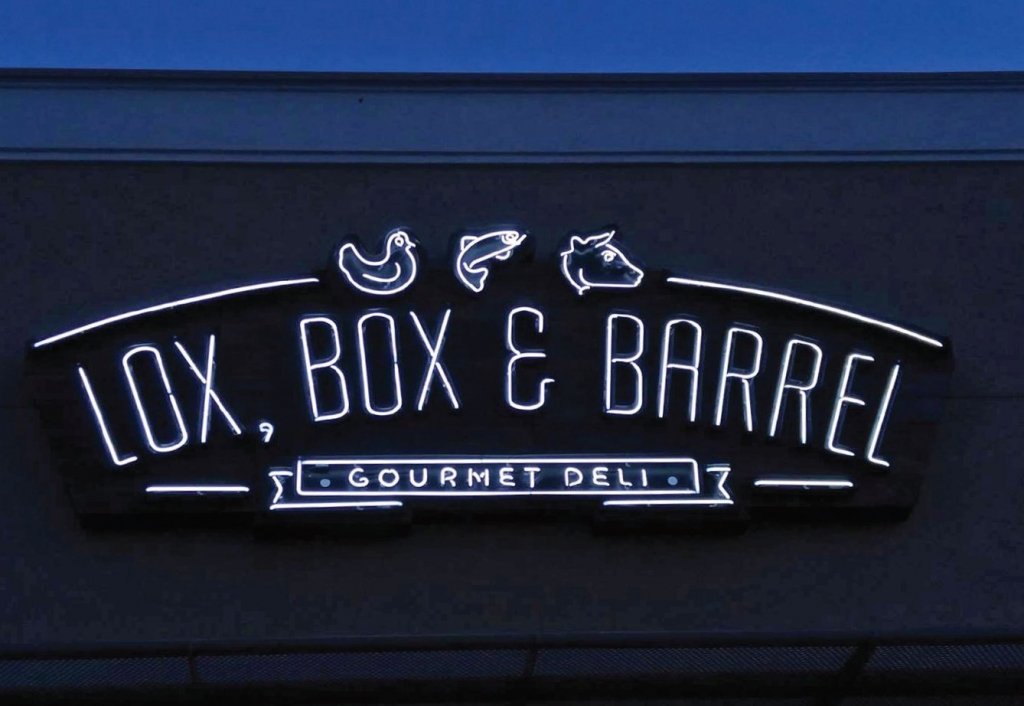To appropriate a Mark Twain quote (couldn’t every article begin with a quote of his?), rumors of neon’s death have been greatly exaggerated. Granted, it’s unrealistic to expect its widespread return to illuminating enclosed channel letters or to brightening cabinet signs when LEDs or fluorescent tubing do so far more economically.
However, neon will maintain a prominent place in sign illumination for the foreseeable future. For exposed channel letters, logos and sculptural elements, no alternative matches neon’s luminance. And, neon possesses an intangible, yet undeniable, appeal – its legacy as the luminescent catalyst of vibrant urban areas worldwide resonates today. Over the late 20th and early 21st centuries, complex economic forces have undone many cities’ vitality. Of course, a withering business climate also translates into a desolate signage landscape. Now, leaders in many US metropolitan areas look toward their urban cores for entrepreneurial rejuvenation. Often, these business owners are interested in celebrating local culture with their signage. Enter neon.
Whether the customer’s goal is to be historically reverent, funky or simply bright, neon brilliantly fulfills branding needs. Read on to see how three shops (two of which are in or near Austin, where “Keep it Weird” dovetails with an affinity for the historical or whimsical – again, neon’s a perfect fit) keep neon front and center in the public eye, and a gallery from an architectural-neon relighting along Route 66. Neon was omnipresent during the Mother Road’s heyday, so they two share an intertwined, iconic history.
Neon-sign fabricators face challenges – Marcus Thielen addressed the difficulties they encounter when locating supplies (see ST, December 2014, page 32), and lighting tradeshows underscore that only the wares of new-generation manufacturers are being touted. Still, demand for neon remains strong in the marketplace, and shops who ply their trade with it have remained resourceful. And, as this gallery attests, they provide abundant local color.
In 1986, founders Greg and Sharon Keshishian synergized their glassblowing and metalworking talents and founded Austin, TX-based Ion Art, a multi-faceted company that builds signage, sculptures and illuminated architectural graphics. Contrary to some shops’ tendencies to narrow production capacity and outsource complex work, the shop eagerly embraces challenges and builds all elements in-house. Mark Westphal, Ion Art’s lead fabricator, said, “Austin is more inclined to embrace newer styles of neon as a modern-retro aesthetic than actual preservation of old elements.”
To accomplish intricate neon bends, Sharon said, “Always use gravity in your favor while bending, allowing it to do your work for you. You can’t fight gravity or your glass. You also need good fires and a flat table.”
Bending Neon: Play it Safe
A couple years ago, neon-tubing companies changed their glass formulas to be lead-free. For the most part, I like working with the new glass, although I had to go through a learning curve to become accustomed to its slightly different properties.
However, the new glass formulation has its drawbacks – in particular, the intense orange flare it emitsduring heating. The glass’ container has a note about using protective eyewear. However, conventional safety glasses weren’t sufficient; even with them, I experienced blurry vision. After doing some research and testing of my own, I found that the blurring stopped only when I wore safety glasses with a sodium-flare lens. Long-term exposure to the glass’ sodium flares puts the user at risk for eye damage. Phillips Safety has a good selection of goggles with the appropriate lenses; find them here:
http://tinyurl.com/h3lfxfs
If you work with neon, please do yourself a favor and make sure you have the necessary protective eyewear.
–Mark Westphal, neon fabricator, Ion Art
(Editor’s Note: Lighting Techniques columnist Marcus Thielen will address tubebending safety in his September column.)
Advertisement



 Tip Sheet1 week ago
Tip Sheet1 week ago
 Photo Gallery2 days ago
Photo Gallery2 days ago
 Ask Signs of the Times4 days ago
Ask Signs of the Times4 days ago
 Real Deal1 week ago
Real Deal1 week ago
 Benchmarks6 days ago
Benchmarks6 days ago
 Women in Signs1 week ago
Women in Signs1 week ago
 Photo Gallery1 week ago
Photo Gallery1 week ago
 Women in Signs1 week ago
Women in Signs1 week ago







